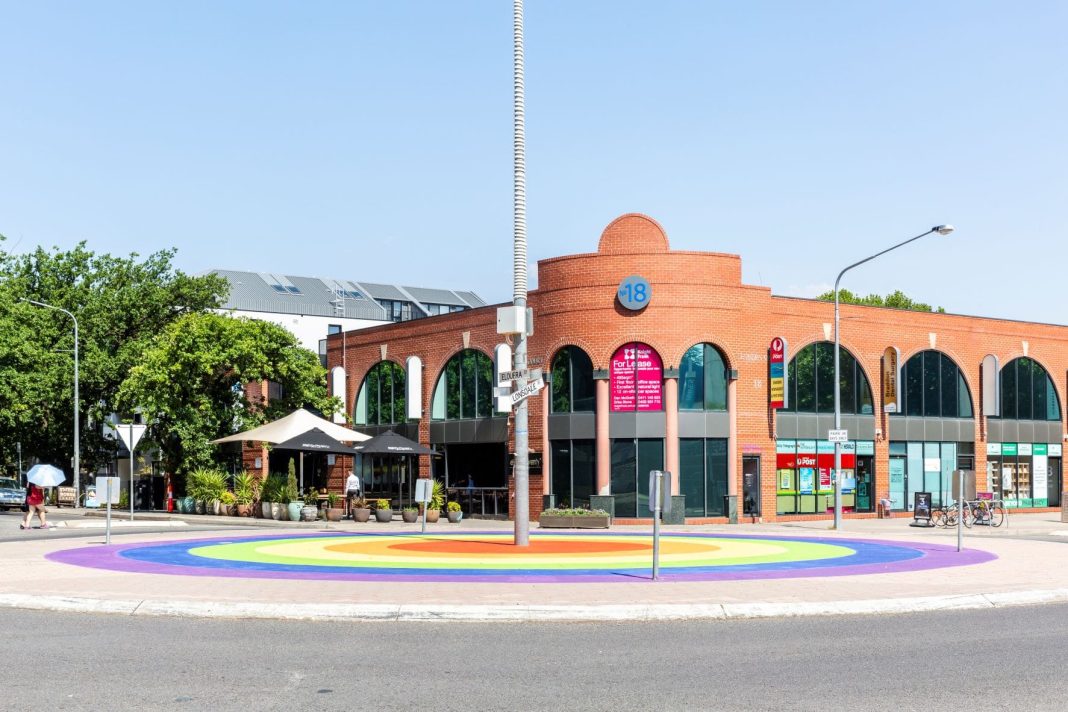Canberra may be known for hosting the array of historically straight white male politicians and be ranked on google as the most boring city in Australia. But could the Canberra be considered both Australia’s political capital and LBGTQI+ capital?
In honour of International Day Against Homophobia, Biphobia, and Transphobia (IDAHOBIT) today, Tuesday 17 May, Canberra Daily’s investigative journalism skills were put to the test to find out whether Canberra is in fact Australia’s queerest city.

On the surface, there’s Andrew Barr; the first openly gay head of any state or territory government in Australia; Yes!Fest, the annual street party celebrating the ‘yes’ vote to same sex marriage; and the iconic Lonsdale Street rainbow roundabout.
Those are all good and well, but shall we dive into the nitty gritty?
In the Australian Bureau of Statistics (ABS) census results from 2016, the ACT reported the highest proportion of same-sex couples in the country at 1.4 per cent. Even going back to 2011, Canberra was still ranked number one, at 1.1 per cent.
In the Australian Marriage Law Postal Survey in 2017, the ACT had the highest percentage of ‘yes’ votes of any state or territory at 74 per cent. The next highest was Victoria at 64.9 per cent, almost 10 per cent lower.
Nine years ago, the ACT Labor Government also challenged the then Federal Government’s refusal to change The Marriage Act.
The ACT’s same-sex marriage legislation was implemented in October 2013, with the first of 31 brief marriages taking place on 7 December, only to be overturned by the High Court just five days later.
This was the second time the ACT had attempted to allow same-sex marriage, following a civil union law endeavour in 2006.
So why is Canberra clearly so overwhelmingly positive and inclusive towards LBGTQI+ people?
Chair of the ACT LGBTIQ+ Ministerial Advisory Council and member of the LGBTIQ+ community herself, Sue Webeck, says Canberra has worked hard to create inclusive policies and practices that make it an easy Territory for queer people to live authentically.
Although, while she says we should celebrate the inclusivity of Canberra, and it is safe for many queer community members, there needs to be an acknowledgement that there are still elements that are unsafe.

“Visibility can be problematic for some queer Canberrans, and while we should absolutely celebrate the diversity in the ACT, we can’t be eyes closed to the fact that it’s not like that for all our community members,” Ms Webeck said.
“I also think the ACT has this magical energy that you only understand when you live here. To be so close and connected to community, the vibrancy of the art and culture… it’s a place that makes space and draws people in.
“It gets a bad rap nationally, but it’s a very hard place to leave because once you live here, you discover the magic.”
In regards to the role of ACT Chief Minister Andrew Barr, Ms Webeck said we shouldn’t downplay the power of visibility.
“Never underestimate the power of someone who is willing to connect and engage and stay connected to community, and champion visibility, even when it comes at a personal cost and is sometimes uncomfortable,” she said.
“I think the personal and professional approach of Andrew Barr in terms of visibility for the ACT community, as well as nationally, is a driving force for inclusion and not just for LBGTQI+ Canberrans.
“You can’t be what you can’t see, and with the Chief Minister, people can see the tie gets tied the same way, the relationship endures in a public setting the same way… life continues.”
When asked why she might consider Canberra the most queer-friendly city in Australia, Ms Webeck has a humbling response.
“The ACT has become and continues to work on a journey for inclusivity. Canberra chooses to centre inclusivity across policy landscapes and legislative reform,” she said.
“It’s not an accident.”
A quick Canberran queer community history:
- Canberra’s gay and lesbian newspaper began in the 1990s, titled PanDA
- Drag performances at the Dickson Hotel began in the early 1980s
- Canberra’s longest running queer venue, The Meridian Club, began in 1985
Canberra Daily would love to hear from you about a story idea in the Canberra and surrounding region. Click here to submit a news tip.



